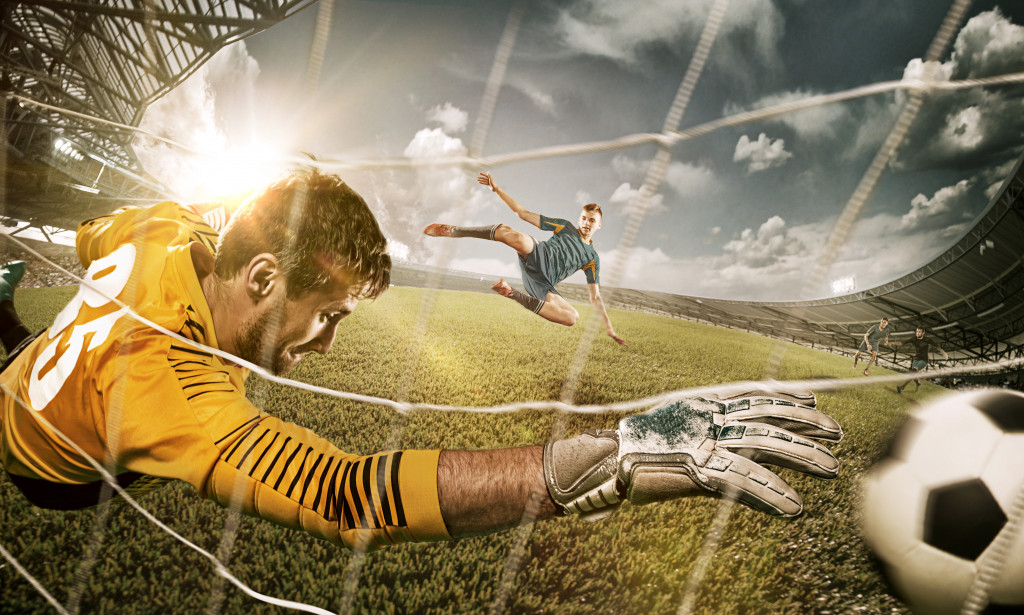Athletes are commendable for embodying superheroes in real life. They commit themselves to the strictest fitness regimen, which is no secret. But, human as they are, they aren’t 100% invincible, and they get injured too.
They could learn to take more caution from them, or else they could suffer irreversible effects. With the help of these tools, they can worry less about the risks and focus more on bagging the wins:
Kinesiology Tape
Although it has only become more mainstream recently, Kinesiology tape has been around since the ‘70s. It was invented by chiropractor Kenzo Kase to replace its predecessors that did not adhere as well to the athlete’s bodily contours. Originally, it was pasted onto already-injured joints like the knees and those connecting the clavicle and the biceps to keep pain levels and injury at bay.
It does this by lifting the skin to relieve the underlying tissues somehow. Moreover, it promotes optimal blood and lymphatic fluid circulation. Otherwise, these fluids will accumulate in the injured area, therefore, increases its inflammation.
Lately, though, it is increasingly used as a preventive tool against injury that is worn before exercising or playing sports. The market offers versions made of waterproof and odor-resistant material, so the wearer can keep it on while showering. What makes the waterproof type more practical is when you have it placed by a physical therapist, who knows how to maximize the tool, you can keep its placement for days, given you have idle periods in between training or competitions.
Compression
You might wonder why athletes like basketball, baseball, and football players don constricting articles of clothing like head and armbands and knee-length socks when they need to make big movements and know they would sweat profusely in the process. As if these were not enough, they would layer on hinged knee braces or elbow pads.
The obvious reason they take all the trouble, making their sporting garb appear almost tacky, is that they have to protect their most important value-adding asset: their body. These accessories mainly compress the bones, joints, and muscles to shield them from abrupt movements. Like kinesiology tape, compression clothing also regulates blood circulation.
In the case of injury, compression clothing also curbs inflammation and pain sensation. Moreover, in the case of compression socks, it keeps the wearer’s legs from feeling tired due to the lift it provides.

Splints
Some splints cater to different parts of the body for fresh injuries, especially where a broken bone is involved or an enduring pain that is still manageable. Splints prevent dislocation from reoccurring as it limits the affected part’s movement.
A finger splint, for instance, is used by basketball players. Archers and bowling players use a wrist type. But, a more commonplace use of this is for those diagnosed with carpal tunnel syndrome.
A calf splint is commonly used by volleyball and football players. More advanced forms of splints come with a vacuum mechanism, most common of which are for the arms. What it does is suck out excess air from the injured body part, making it very reliable for fracture-related injuries.
Eyewear
Eyewear is designed uniquely depending on the sport, but all serve to protect the eyes and provide clear lines of sight, especially for outdoor sports with more dynamic terrain. Goggles for cyclists, skiers, and swimmers have a snug fit and keep liquid from entering the eyes, therefore, distracting them. It could be made with clear lenses or are polarized to enhance its style while also providing protection from ultraviolet rays.
Warming Up
No matter how seasoned an athlete is, he does not discount the benefit of a well-rounded warm-up before engaging in another intensive training session. Generally speaking, a warm-up should start with at least five minutes of low-intensity movements like walking or jogging. Some would prefer more heart-pumping action like a twenty-minute run on the treadmill followed by a full-body stretch with special emphasis on the neck, shoulders, waist, hips, knees, and ankles.
Nutrition
You can fortify your bones and muscles’ defenses from injury by supplying them with proper nutrition. Depending on the diet prescribed to them, athletes eat a good mix of lean meat, whole grain, and fruit.
Also, they hydrate properly. They know the importance of restoring lost electrolytes with the help of energy drinks to facilitate the timely distribution of nutrients and minerals to their body, thus preventing injuries, cramps, and numbness.
An athlete’s way of life reminds us that we need to balance out extreme and moderate activities to stay healthy. Also, we could suffer setbacks like injuries, but we are capable of bouncing back.


